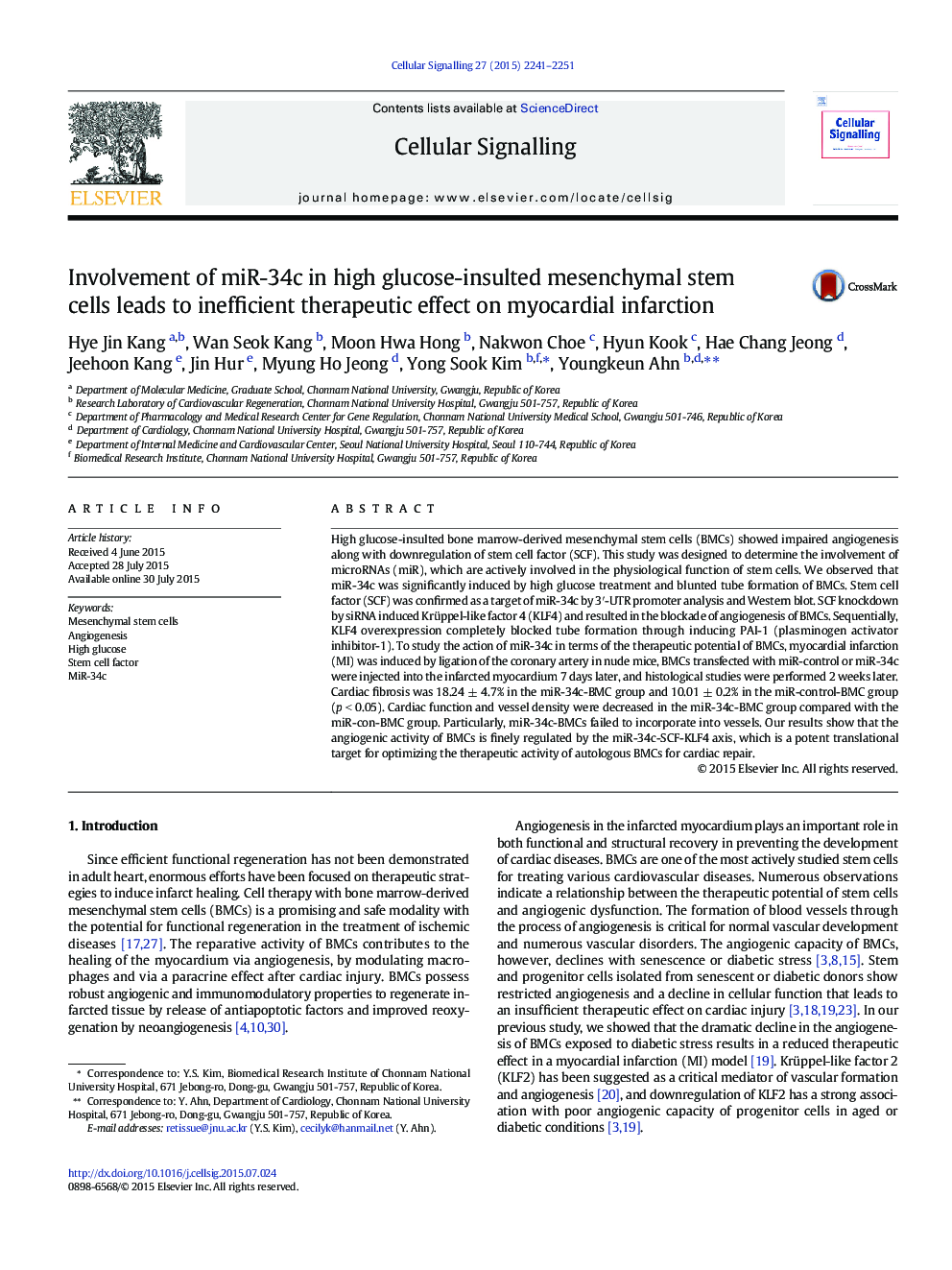| کد مقاله | کد نشریه | سال انتشار | مقاله انگلیسی | نسخه تمام متن |
|---|---|---|---|---|
| 1963562 | 1058466 | 2015 | 11 صفحه PDF | دانلود رایگان |

• Angiogenic potential of BMCs is impaired by high glucose treatment.
• High glucose induces miR-34c to target SCF in BMCs.
• Anti-angiogenic factor KLF4 is increased by miR-34c/SCF pathway.
• miR-34c-transfected BMCs fail to exert therapeutic effect due to poor incorporation into vasculatures.
High glucose-insulted bone marrow-derived mesenchymal stem cells (BMCs) showed impaired angiogenesis along with downregulation of stem cell factor (SCF). This study was designed to determine the involvement of microRNAs (miR), which are actively involved in the physiological function of stem cells. We observed that miR-34c was significantly induced by high glucose treatment and blunted tube formation of BMCs. Stem cell factor (SCF) was confirmed as a target of miR-34c by 3′-UTR promoter analysis and Western blot. SCF knockdown by siRNA induced Krüppel-like factor 4 (KLF4) and resulted in the blockade of angiogenesis of BMCs. Sequentially, KLF4 overexpression completely blocked tube formation through inducing PAI-1 (plasminogen activator inhibitor-1). To study the action of miR-34c in terms of the therapeutic potential of BMCs, myocardial infarction (MI) was induced by ligation of the coronary artery in nude mice, BMCs transfected with miR-control or miR-34c were injected into the infarcted myocardium 7 days later, and histological studies were performed 2 weeks later. Cardiac fibrosis was 18.24 ± 4.7% in the miR-34c-BMC group and 10.01 ± 0.2% in the miR-control-BMC group (p < 0.05). Cardiac function and vessel density were decreased in the miR-34c-BMC group compared with the miR-con-BMC group. Particularly, miR-34c-BMCs failed to incorporate into vessels. Our results show that the angiogenic activity of BMCs is finely regulated by the miR-34c-SCF-KLF4 axis, which is a potent translational target for optimizing the therapeutic activity of autologous BMCs for cardiac repair.
Figure optionsDownload high-quality image (162 K)Download as PowerPoint slide
Journal: Cellular Signalling - Volume 27, Issue 11, November 2015, Pages 2241–2251